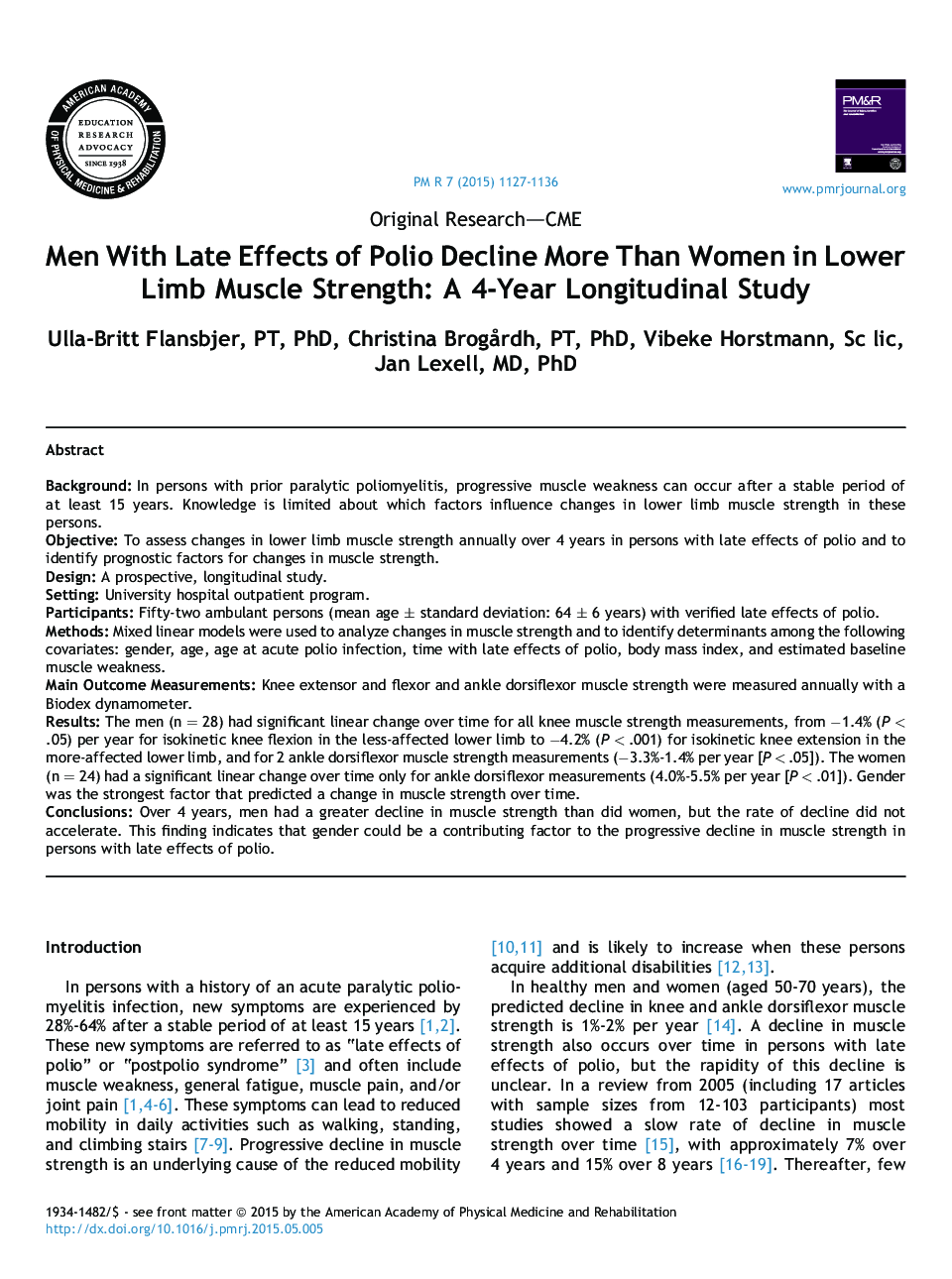| کد مقاله | کد نشریه | سال انتشار | مقاله انگلیسی | نسخه تمام متن |
|---|---|---|---|---|
| 2705133 | 1144729 | 2015 | 10 صفحه PDF | دانلود رایگان |
BackgroundIn persons with prior paralytic poliomyelitis, progressive muscle weakness can occur after a stable period of at least 15 years. Knowledge is limited about which factors influence changes in lower limb muscle strength in these persons.ObjectiveTo assess changes in lower limb muscle strength annually over 4 years in persons with late effects of polio and to identify prognostic factors for changes in muscle strength.DesignA prospective, longitudinal study.SettingUniversity hospital outpatient program.ParticipantsFifty-two ambulant persons (mean age ± standard deviation: 64 ± 6 years) with verified late effects of polio.MethodsMixed linear models were used to analyze changes in muscle strength and to identify determinants among the following covariates: gender, age, age at acute polio infection, time with late effects of polio, body mass index, and estimated baseline muscle weakness.Main Outcome MeasurementsKnee extensor and flexor and ankle dorsiflexor muscle strength were measured annually with a Biodex dynamometer.ResultsThe men (n = 28) had significant linear change over time for all knee muscle strength measurements, from −1.4% (P < .05) per year for isokinetic knee flexion in the less-affected lower limb to −4.2% (P < .001) for isokinetic knee extension in the more-affected lower limb, and for 2 ankle dorsiflexor muscle strength measurements (−3.3%-1.4% per year [P < .05]). The women (n = 24) had a significant linear change over time only for ankle dorsiflexor measurements (4.0%-5.5% per year [P < .01]). Gender was the strongest factor that predicted a change in muscle strength over time.ConclusionsOver 4 years, men had a greater decline in muscle strength than did women, but the rate of decline did not accelerate. This finding indicates that gender could be a contributing factor to the progressive decline in muscle strength in persons with late effects of polio.
Journal: PM&R - Volume 7, Issue 11, November 2015, Pages 1127–1136
